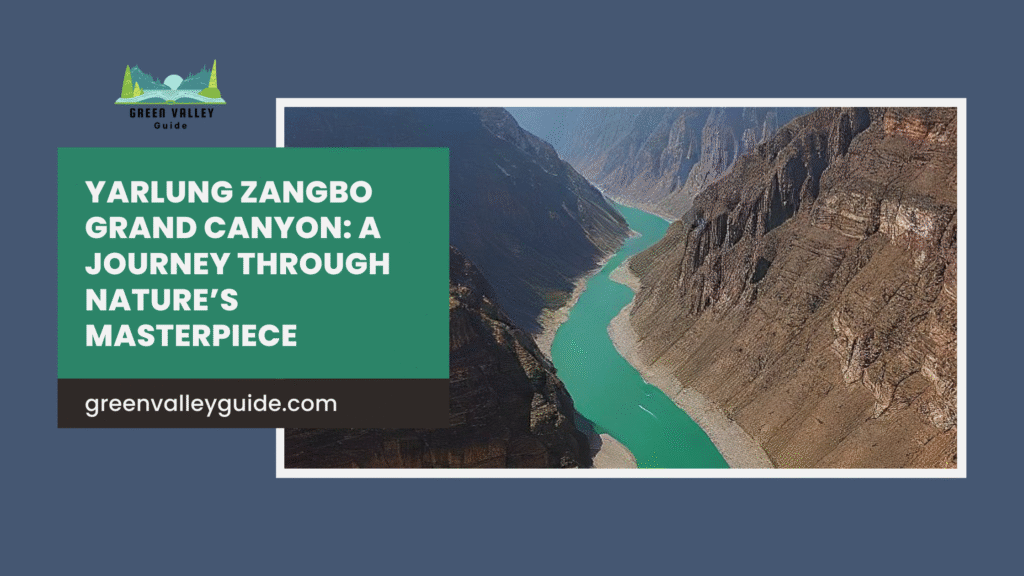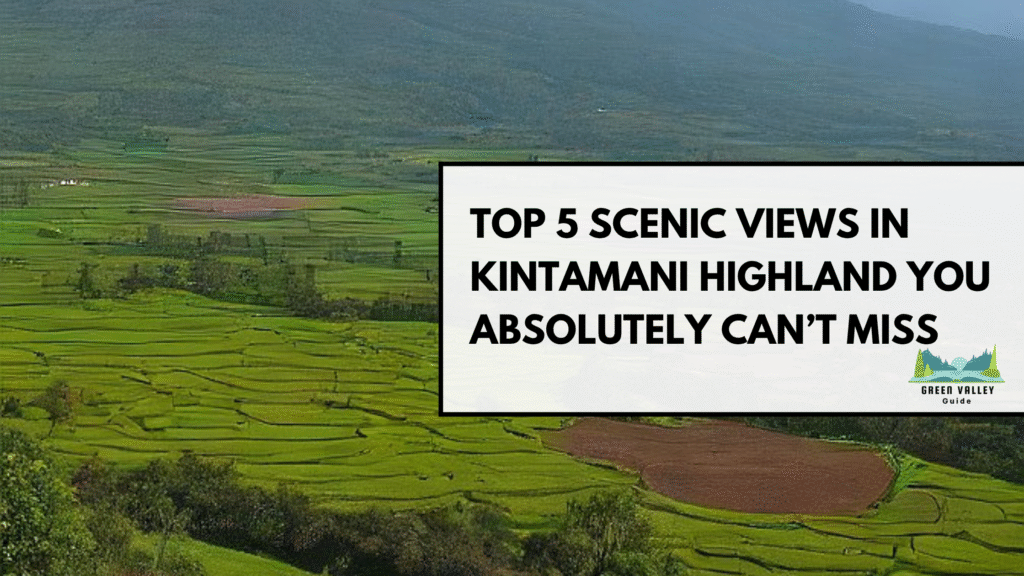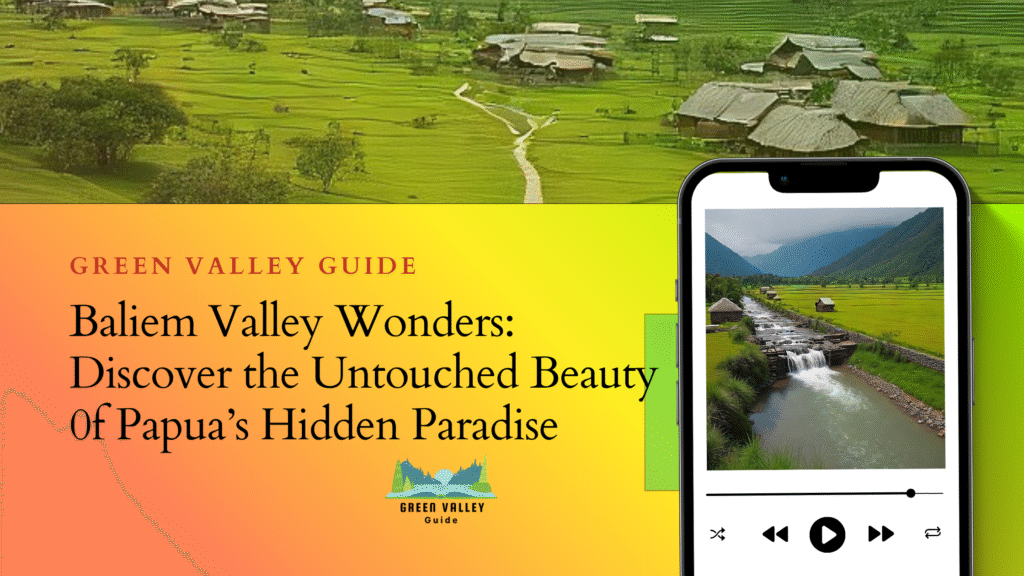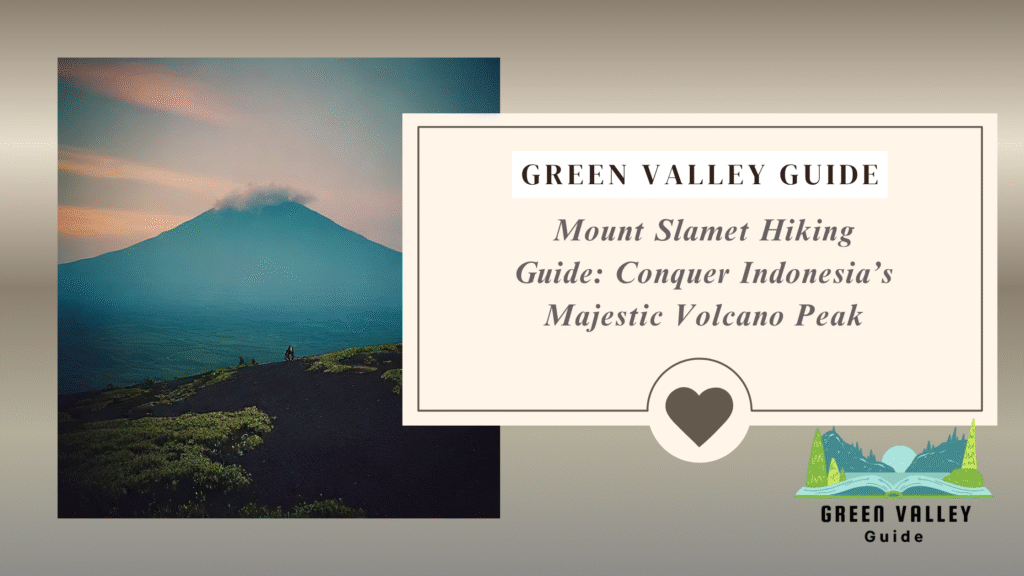Table of Contents
Introduction: Why the Yarlung Zangbo Grand Canyon Is Like No Other
Among the most amazing creations of the world that bear the title of the Yarlung Zangbo Grand Canyon is buried deep in the guts of southern China and the southeastern corner of Tibet. Mountains towering in the air, mist moving in green valleys, and Yarlung Zangbo River swishing through the mountains with the brightness and dignity unsurpassed. It is not an ordinary deep valley that is the refuge of spiritual beauty, the scenery of legend, mysticism, and wizardry.

Yarlung Zangbo Grand Canyon is described as the deepest canyon in the world, surpassing the Grand Canyon in richness and sweep. It cuts more than 500 kilometers and spills 6,000 meters that surfs the snow-capped mountain of Namcha Barwa to the rushing water. However, behind its heart-rending facets is another myth that is not as popular, the myth of incredible wildlife, tribal cultures of Tibet that have been lost, and spiritual affluence that hangs over the air of high mountains.
Experience one of the most uninhabited areas of nature, and as you visit it, you will be amazed by something other than the scenery. You will listen to silence, riddles, and those instances when you feel you are in another world. Being a traveler or simply being interested in something that can broaden the new horizons, this is the experience that you are going to remember in your whole life, the Yarlung Zangbo Grand Canyon.
Where Is the Yarlung Zangbo Grand Canyon? How to Get There
Yarlung Zangbo Grand Canyon is one of the canyons that is situated in the southeast corner of the area of Tibet Autonomous Region and extends so deep into the wild land of the Himalayas, and is targeting to attract the beauty of the highest mountains, bestyt tibeto under the mountain top of Mount Namcha Barwa. The area is a vast wilderness of tropical rainforest and snow mountains that jut into the corner through the least visited corner of the world, but one of the beautiful.
The Yarlung Zangbo Grand Canyon, which competes with the Grand Canyon in the US in both aspects of depth as well as geological complexity, is one of the most inaccessible yet the most worthy tourist points in Tibet. The Grand Canyon is approximately 1,800 meters deep, but some people suggest that this is the deepest miracle in the whole world because it descends about 6,000 meters.
A visit there is something you need to plan on. The majority of the tourists start at Lhasa and fly to the closest airport to the canyon region, Nyingchi Mainling Airport. Its exit point is far out in Nyingchi, and you can have eco-tours, deceptively broken 4×4 lines, or walk for several days. At the same time, though impossible to visit most of the time, and now there is developing infrastructure and an interest in eco-tourism, it has transformed into a more convenient potential.
What Makes the Yarlung Zangbo Grand Canyon the Deepest on Earth?
The river Yarlung Zangbo, as well as the Grand Canyon, is not such a fabulous trifle as the land of the Grand Canyon, but it is a geological giant, which was polished off over millions of years. Basically, the canyon is nothing but thrilling in terms of depth; 10,000 and over 6,000 meters deep, which is attributed to the massive force of the Yarlung Zanbo River that flows through the Qinghai-Tibet Plateau and carves into some of the youngest and highest mountains on earth.
The most remarkable feature there is one called the Great Bend of the river, which bends itself around the sacred mountain Namcha Barwa and takes a curve almost impossible and yet exceedingly spectacular of nearly 180 degrees. The geography of this location is so radical and special to an extent that the majority of the scientists refer to this as the Mount Everest of Canyons (both in size as well as inaccessibility).
Vertical ecology and floral and fauna quite rare and could hardly be discovered in any other part of the world, have also been provided by the vertical ecosystem which occupies the canyon along with steeply varying elevation (such as glaciers and subtropical forests). It seems to be a unique type of size, geological structure, and biological life, which is also becoming a natural phenomenon, a category on its own.
Must-See Natural Wonders Inside the Canyon
Every corner of the Yarlung Zangbo Grand Canyon is a door that leads to nature, not a used-up beauty. It may be said to be most notable, studded with the Great Bend at which the river takes a spectacular turn in the Namcha Barwa, which is generally considered one of the most spectacular mountains in the world. Not too distant looms on the opposite bank Gyala Peri in a lofty gateway of rock and ice.
Surprisingly enough, the canyon features not only rich rainforests, tremendous waterfalls, and glacial mountains, but all of that in one and the same location, and not many other regions on the planet could brag with the same conditions. Millions of rare orchids are rooted in the depths, moss-covered cliffs, the bamboo groves which are found growing along the rivers which are fed by the snow.
An Eden to nature lovers: it hosts the snow leopards and red panda, and even very exotic birds like the Blyth’s tragopan. It is heaven on earth in terms of photography, ecology, or adventure travel.
Hidden Tribes and Living Culture of the Canyon

Each one will easily be captivated by the beauty of the Evolution of the Yarlung Zangbo Grand Canyon, but the history of culture there is quite curious, too. However, inside the canyon itself, there are indigenous people who reside there, such as the Lhoba and Monpa combination of ethnicities-which comprise some of the largest and most remote groups of individuals in Tibet.
These individuals are seen to live in harmony with nature, farmers, terrace farmers at high altitude, traditional rituals taking the form of animism, and houses occupied by locals are made using the local wood and stone. The oral histories being performed by generations of their lives speak of sacred mountains and the spirits of the river, which act to guide daily life.
This is the heritage that is alive and demographically humbling and enlightening for those who are culturally inclined, travelers. However, it is important to be ethical: employ local guides, consult before taking photos, and whenever you get a chance to be beneficial to community-based tourism.
Wildlife Encounters in the Yarlung Zangbo Grand Canyon
However, the Yarlung Zangbo Grand Canyon is a miracle not only geologically, but also economically healthy ecological life ecosystem. Its massive topographical profile creates an upright profile of an ecosystem, a fringing of alpine tundra to sub-tropical rainforests, appropriate to billions of different organisms of flora and fauna. This is a hidden heaven to people with the ability to experience nature.
One can also find native species like the misty leopards, Bengal tiger, and the endangered red panda that inhabit the environment. Bird watching also fits perfectly in the dense forest areas like the Blyth tragopan and the black necked cranes, and many varieties of the Himalayan pheasant, and so on.
The richness notwithstanding, some of the threats that were present in the area include: climate threats, and illegal poaching. However, eco-tourism and the establishment of special zones to help in the salvaging of this delicate ecosystem are being tried in greater numbers. Not only does this kind of responsible travel make your experience, but it also helps to pave the way to protecting biodiversity.
Check Out: Lancang River Revealed: The Ultimate Travel Guide to China’s Mighty Lifeline.
Best Time to Visit the Yarlung Zangbo Grand Canyon
The time at which you will go to the Yarlung Zangbo Grand Canyon is very important in regard to safety and the beautiful view. This is, therefore, on a season-by-season basis so that you make the best trip:
- April-June (spring): Spring is the ideal time to trek and observe wildlife as it is hot but has bright weather, the wild flowers are blooming, and the weather is moderate.
- Fall (SeptemberSeptemberOctoberNovember): this is the most famous season of the year, with golden forests and the view over the mountains, and the autumn weather is also warmer and softer.
- Summer (July-August): Summer is not the best time to plan since the rains come to flood the region, and the paths become slippery, and even the out-of-the-way tracks become inaccessible.
- Winter- March: Offers serene silence, treks that are of high altitude are dangerous due to the snow and ice.
Carry out your plans regarding the local Tibetan festival, either like the Butter Lamp Festival or Saga Dawa, nd make your visit culturally,o as it might fall during spring and autumn.
How to Prepare for Your Canyon Journey
Visiting the Yarlung Zangbo Grand Canyon is something that one cannot forget, although one needs to plan. Visitors will need to be logistical and physically ready because it is surrounded by high mountains in Tibet, and it is very remote.
Travel Documents: All foreign visitors require a Tibet Travel Permit that can be obtained through a licensed Tibet tour operator, which can normally be done in advance. One can have an opportunity to obtain additional permits to reach some of the closed sections of the canyon.
What to Pack:
- Altitude drug (you have to consult your doctor first)
- Fashions with many layers to deal with extreme changes in temperature level
- Rainproof boots, hiking sticks, and greener gears
- Binoculars and a good camera to observe animals and to capture an aesthetic picture of the scenery.
Not only is it encouraged, but in most cases, it is obligatory to hire a local guide. The needed information is provided by guides, their help in obtaining an authorization, and respectful treatment of the culture and sacred places.
In the area, there are eco lodges, simple guesthouses, and camping facilities. These homestays are innumerable and will indeed give your adventure the tastes of culture as you get an insider experience of the family life in Tibet.
Sustainable Tourism in the Yarlung Zangbo Grand Canyon

The main appeal of the Yarlung Zangbo Grand Canyon is the fact that it is pristine; it also happens to be the most sensitive component of the same. As one of the clean and fragile ecosystems in the world today, this region requires sustainable tourist activities by any individual visiting the region.
Conservation of the canyon is necessary because it also has its welfare of the endangered fry, sacred scenery, and the indigenous Tibetans, whose chief source of income is the land. This thin balance can be under the threat of uncontrolled tourism.
Such forms of responsible traveler behavior include:
- By staying in the middle of the marked trail in order not to harm the native plants
- Creating the usage of all waste coordination and cutting plastic usage
- Avoidance of loud sounds and courtesy to animals
- Religious Site and villages
Partisanship assists, as well. Resolved to use lodges owned by tourists, hire Tibetan guides, and consider making donations to the local conservation efforts.
Conclusion: Why the Yarlung Zangbo Grand Canyon Belongs on Your Bucket List
Breath-taking in its depth, Yarlung Zangbo Grand Canyon with its holy mountains and its secret life is regarded not just as the place to go out and observe–but as the soul-enlivening experience, which can transform you deeply, even internally. Having a chance to stand at some gloomy overlook, to hike across tracks that are centuries old, or to acquaint oneself with the understated-but-substantial Tibetan culture, Yunnan leaves an imprint on almost every corner of time.
This primitive beauty that the canyon brings is something that will not be found in a more commercialized scenic spot, an analogy that can only be compared to traveling back in time. It is the place where nature is king, the story is transported in the mountains, and each sun break is an individual show.
In the moments when you are in need of a great adventure and you want to combine high altitude drama, high biodiversity, and rich culture, then the Yarlung Zangbo Grand Canyon is ready to be explored. Put it on your trip itinerary and prepare to be impressed by Mother Nature at her best.
For more info: Click Here.
FAQs
1. How can Yarlung Zangbo Grand Canyon be accessed?
The canyon can only be approached with travel permits to Tibet and to the long journey into a distant land, usually to Lhasa or Nyingchi. Better to go through a registered travel Agency in Tibet, which will look after conveyance, permit, and guides too.
2. When should the Yarlung Zangbo Grand Canyon be the most attractive?
The least windy periods are spring (April-June) and autumn (September-November), when the scenery is most beautiful, skies are clear, and temperatures cannot be called hot (or even cold, as in winter). Visiting the place is not recommended during the monsoons due to landslides.
3. Is it possible to observe the wildlife in Yarlung Zangbo Grand Canyon?
Yes! The canyon is a hot spot of biodiversity, which comprises one species of rare animals like the clouded leopard, red panda, and the golden langur. It is a matter of fate, time; however, when one sees the bird, it is definitely worth the time and effort in the forested regions when one goes on a nature tour, bird watching, as well as bird spotting.





